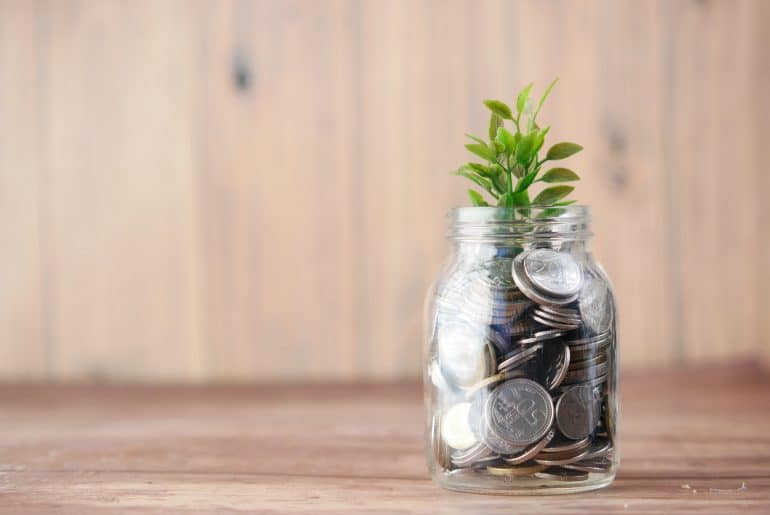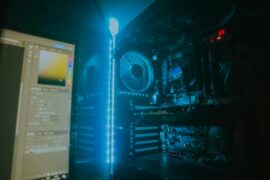This article may contain references to products or services from one or more of our advertisers or partners. We may receive compensation when you click on links to those products or services. Nonetheless, our opinions are our own.

Updated by Albert Fang
With the boom of mobile applications like Robinhood offering mobile investing from smartphones, the world of investing has opened up to individuals of all backgrounds and financial statuses. With the rise of mobile investing came the onset of a phenomenon known as “micro-investing.” This practice moved investing out of the hands of only the wealthy and into the hands of people who only had a small amount, sometimes only pennies, to invest. This growing trend allows investors to invest small amounts of money at a time, often automated, using mobile platforms to grow an account over time. The idea behind it is that small amounts frequently invested can add up over time to match larger accounts that are more traditional. Services such as Stash, Wealthfront and Acorns are examples of micro-investing services.
How Does Micro-Investing Work?
As each service has its own set of features and offerings, it will be up to you to figure out how micro-investing works for you. Using an app that rounds up purchases on a credit or debit card and transfers the excess to an investment account is a popular method. Other apps work the same way but move the excess change into a savings account. A service such as Stash offers both. Many services require you to provide information about your finances, identity, and the accounts you wish to link in order to sign up for an account. Remember that not all apps offer the same features, so pick the one that has the ones you want before you sign up. Make sure you know where the company is registered, as you may not be able to do business with them if they are not registered in your area. So, what are some of the micro-investing services available, and what are the advantages and disadvantages of each?
Stash
Stash started its life as just a micro-investor app, but has since expanded to include stock and ETF offerings, and it’s a great place to start for beginner investors, according to Stash vs Wealthfront reviews.
Pros:
- Invest any dollar amount with subscription fees starting as low as $3 / month
- Extensive library of educational material
- Account customization
Cons:
- No tax strategies
- Only virtual financial advisors, no live advisors
- IRA portfolio management isn’t automated
Wealthfront
Wealthfront works more like a traditional brokerage account, with a low management fee of 0.25%. It requires an account minimum of $500 maintained, and has robo-advisories designed to help with wealth-building strategies. The company offers a wide range of gal-setting features, allowing the beginner to see tangible accomplishments in their accounts, such as saving for college or a wedding.
Pros:
- Portfolios are customizable with cryptocurrency and ETFs
- Free virtual planning tools
- Available 529 accounts
Cons:
- No access to human financial advisors
- No online chat
- Difficult to get a live person on the phone for customer service
Acorns
This micro-investing platform offers three strategies for users, ETFs trading accounts, IRA retirement planning, and debit card services. Acorns subscription fees for these services are $1, $3, and $5 per month, respectively. The company has since expanded to offer minor banking services to members, including ATM withdrawal options. The service works by rounding up purchases on linked credit cards and debit cards for investment into specific accounts. However, one should be aware that, according to many Stash vs Acorn reviews, Acorns has several high fees that can appear under various investment circumstances.
Pros:
- Automated investing of spare change on purchases
- Allows cash back at certain retailers
- Has extensive educational content
Cons:
- Fees are rather high on small balance accounts.
Summary
In researching these micro-investing services, it seems that Stash is the place to start for first-time micro-investors. If you are not certain whether micro-investing is right for you, Stash offers a low-cost way to try it out without the need to maintain a $500 balance as with Wealthfront, as seen in many Stash vs Wealthfront reviews, or limited offerings as with Acorns, as seen in several Stash vs Acorn reviews. Undoubtedly, each of these services have their strengths and weaknesses, though Stash users can start out small with a simple savings account and move outward into ETF and retirement planning. On top of all that, Stash offers extensive educational material that the beginner investor will likely find very useful.
Disclaimers
Paid non-client endorsement. See Apple App Store and Google Play reviews. View important disclosures.”
Nothing in this material should be construed as an offer, recommendation, or solicitation to buy or sell any security. All investments are subject to risk and may lose value.
*Offer is subject to T&Cs.**
FAQ
-
What are limitations on micro-investing?
It is easy to fall short of your investing goals when you are only contributing occasional pennies to an account rather than a set amount monthly. There is also less ability to diversify a portfolio.
-
What demographic is best suited to micro-investing?
Anyone can start at any time, but those who get started early and invest will often see the most benefits. The micro-investing strategy likely will best benefit young investors and beginner investors.
-
When choosing a micro-investing service, what should I look for?
Look for a service that is FINRA registered, as not all are, and do not have hidden fees.
Disclaimers
Paid non-client endorsement. See Apple App Store and Google Play reviews. View important disclosures.”
Nothing in this material should be construed as an offer, recommendation, or solicitation to buy or sell any security. All investments are subject to risk and may lose value.
Stash Subscription fee starts at $1/ month. You’ll also bear the standard fees and expenses reflected in the pricing of the ETFs in your account, plus fees for various ancillary services charged by Stash and the Custodian. Please see the Advisory Agreement for details. Other fees apply to the bank account. Please see the Deposit Account Agreement.
“Retirement Portfolio” is an IRA (Traditional or Roth) and is a non-discretionary managed account. Stash does not monitor whether a customer is eligible for a particular type of IRA, or a tax deduction, or if a reduced contribution limit applies to a customer. These are based on a customer’s individual circumstances. You should consult with a tax advisor.
*Offer is subject to T&Cs.** You must complete within the specific time period included in this offer: (i) successfully complete (or already have completed, or re-apply for and complete) the registration process of opening an individual taxable brokerage account (“Personal Portfolio”), (ii) link a funding source to your account; AND (iii) deposit at least $5 from your funding source into your Personal Portfolio. *T&Cs

Reviewed and edited by Albert Fang.
See a typo or want to suggest an edit/revision to the content? Use the contact us form to provide feedback.
At FangWallet, we value editorial integrity and open collaboration in curating quality content for readers to enjoy. Much appreciated for the assist.
Did you like our article and find it insightful? We encourage sharing the article link with family and friends to benefit as well - better yet, sharing on social media. Thank you for the support! 🍉
Article Title: Stash App Review: Stash vs Wealthfront vs Acorns Pros and Cons
https://fangwallet.com/2022/03/08/stash-app-review-stash-vs-wealthfront-vs-acorn-pros-and-cons/The FangWallet Promise
FangWallet is an editorially independent resource - founded on breaking down challenging financial concepts for anyone to understand since 2014. While we adhere to editorial integrity, note that this post may contain references to products from our partners.
The FangWallet promise is always to have your best interest in mind and be transparent and honest about the financial picture.
Become an Insider

Subscribe to get a free daily budget planner printable to help get your money on track!
Make passive money the right way. No spam.
Editorial Disclaimer: The editorial content on this page is not provided by any of the companies mentioned. The opinions expressed here are the author's alone.
The content of this website is for informational purposes only and does not represent investment advice, or an offer or solicitation to buy or sell any security, investment, or product. Investors are encouraged to do their own due diligence, and, if necessary, consult professional advising before making any investment decisions. Investing involves a high degree of risk, and financial losses may occur including the potential loss of principal.
Source Citation References:
+ Inspo











































